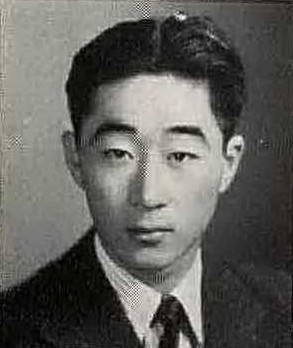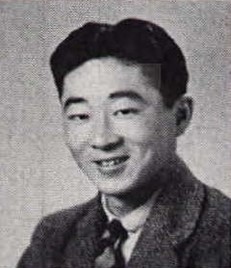
Ryo Uchida
Sergeant
442nd Regimental Combat Team
Service Company
Ryo Uchida was born on April 10, 1921, in San Pedro, California. He was the younger of two sons of Setsuzo and Take (Yamamoto) Uchida. Setsuzo Uchida was from Honjo, Kodama-Gun, Saitama Prefecture, Japan. A graduate of the Imperial University, Setsuzo arrived in San Francisco on the ship Tenyo Maru on October 24, 1911, from Yokohama, and was listed as a student. Take Yamamoto arrived in San Francisco on October 15, 1914, on the Tenyo Maru. They were married on November 10, 1914, in Pomona, California. Setsuzo worked as a farmer in the Imperial Valley; and later moved to San Diego and became Secretary of the Japanese Association. He took his family to Mazatlán, Mexico, where he was the Secretary for the Los Tejanos Investment Company silver mine. They lived in Mexico for one year and returned to the U.S. to relocate to Idaho.
In the 1930 Federal Census the family was living in Idaho Falls, Idaho. In 1938 Ryo was living in Utah, and in the 1940 Federal Census on April 11, he was age 19 and a lodger in the home of J.K. Sakurada, a merchant at the fish market, in Ogden. Ryo’s occupation was listed as “new worker.”
In 1941, he was a sophomore at Utah State Agricultural College (USAC), as shown in his class photo below, from the yearbook, Buzzer.
Ryo registered for the draft on February 16, 1942, with Local Board 2 in Logan, Cache County, Utah. He was a junior at USAC at the time. He was 5’5” tall and weighed 135 pounds. His next of kin was listed as his father, Setsuzo.
On June 9, 1943, he received a Bachelor of Science degree in Economics from Brigham Young University (BYU), Provo, Utah.

In 1944 Ryo was among 31 Cache County men sent on August 8 to the Army Training Center for induction. They had previously undergone pre-induction examinations at the Center and were released on furlough. He enlisted in the U.S. Army the following day, August 9, at Fort Douglas, Utah.
In March 1945, he became an acting squad leader in the replacement depot at Camp Fannin, Texas, as reported in the Ogden Standard Examiner. He left for the European Theater on September 19, 1945, and was assigned to the 442nd RCT who was in Italy for occupation duties. He was promoted to Sergeant a year later, in September 1946.
Ryo returned to the U.S. on November 11, 1946, and was released from active duty on January 15, 1947, at Fort Sheridan, Illinois.
For his World War II service, he was awarded the Good Conduct Medal, American Campaign Medal, European-African-Middle Eastern Campaign Medal, World War II Victory Medal, and Army of Occupation Medal. Ryo was awarded the Congressional Gold Medal on October 5, 2010, along with the other servicemen of the 100th/442nd Regimental Combat Team. This is the highest Congressional Civilian Medal.
In 1947, he was a member of the Japanese-American Citizens League, Ogden Chapter. He was among 50 Japanese American men who worked as volunteers for over two years on the rehabilitation of the Japanese section of the Ogden City Cemetery, completed in 1950. It contained abut 40 family plots, some dating back to 1900.
Ryo married Ruth Michiye Iwata, from Salt Lake City, on December 8, 1949, in Salt Lake County, Utah. They had a daughter born in 1953.
Uchida reenlisted in the U.S. Army for service for the Korean War on November 23, 1950, and was released on November 27, 1951. His U.S. Army Form 53 listed his home as Brigham City, Box Elder County, Utah, and his occupation as self-employed farmer.
The Herald-Journal (Logan, Utah) reported on June 4, 1953, that Ryo had been an Assistant Investigator for the 8th Army Judge Advocate Corps investigation into War Crimes at Koje Island, Korea. At the time of the story, Ryo was a graduate student at BYU.
Ryo went back on active duty on March 17, 1954, and retired on June 26, 1972.
He passed away on December 29, 1992, in Reno, Washoe County, Nevada. His wife died on August 18, 2002, in San Francisco.
Researched and written by the Sons & Daughters of the 442nd Regimental Combat Team in 2021.
